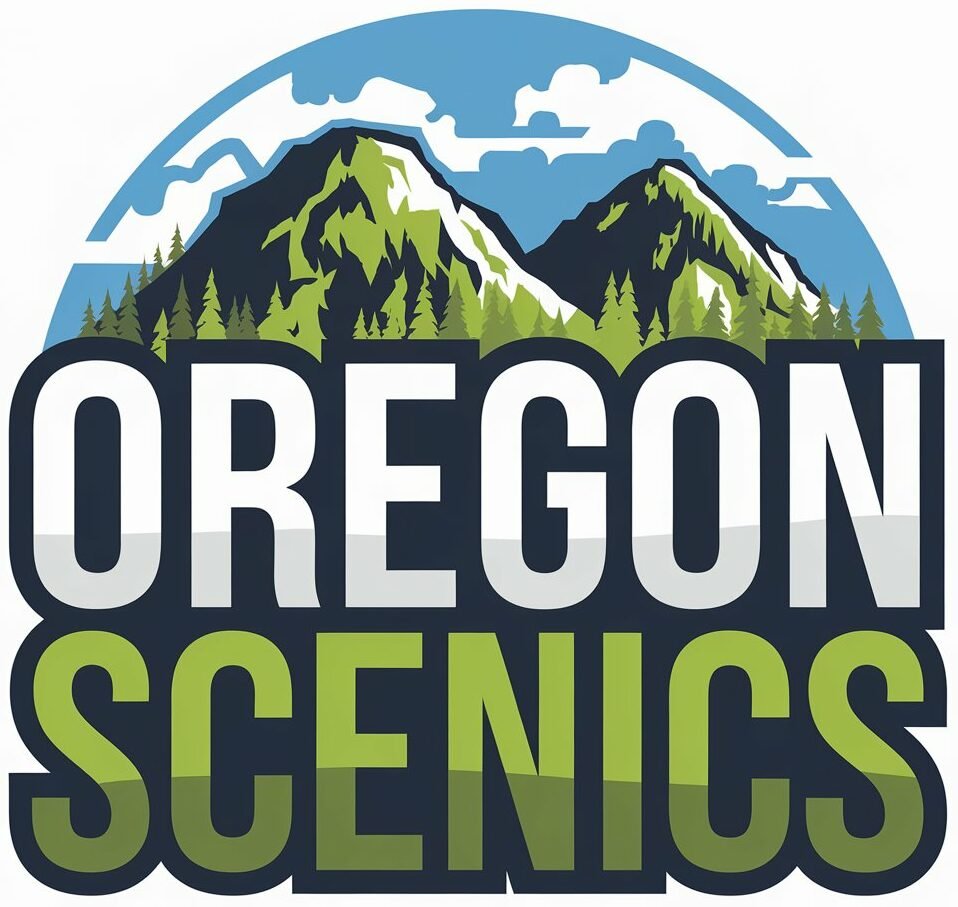Nestled in the heart of Oregon, the Timberline Trail around Mount Hood offers an unforgettable adventure for hiking enthusiasts. As I lace up my boots and prepare to embark on this iconic 40-mile loop, I’m reminded of the trail’s legendary reputation for both its breathtaking beauty and challenging terrain. With every step, hikers are treated to stunning vistas, verdant forests, and the ever-present majesty of Mount Hood itself.
This trail promises more than just picturesque landscapes; it offers a journey through diverse ecosystems and a chance to witness the raw power of nature. Whether you’re crossing glacial streams or exploring rocky ridges, the Timberline Trail tests your endurance while rewarding you with unparalleled views. It’s not just a hike—it’s an experience that stays with you long after the journey ends. Join me as I explore the wonders and challenges of Mount Hood’s Timberline Trail.
Overview of Mount Hood’s Timberline Trail
Mount Hood’s Timberline Trail, located in the Mount Hood National Forest in northwest Oregon, offers an exhilarating experience. The trail creates a scenic loop around Mount Hood, the state’s highest point, offering adventures at or near the treeline. Approximately 1.5 hours east of Portland, this trail forms part of a breathtaking wilderness setting.
Location
The Timberline Trail lies entirely within the Mount Hood National Forest near Government Camp, Oregon. Specific street addresses aren’t applicable, given the trail’s natural setting. The nearest landmark is the Timberline Lodge, located at 27500 E Timberline Rd, Government Camp, OR 97028.
Opening Hours
Access to the Timberline Trail is open year-round, although sections might become impassable during heavy snowfall. Summer through early fall generally offers the best accessibility. No official opening hours impose restrictions.
Difficulty Level
The trail presents a challenging hike. Its length spans approximately 38-41 miles with around 9,000 feet of cumulative elevation gain. The rugged terrain and varying conditions require preparation and experience, making it suitable for advanced hikers.
Amenities/Facilities
Essential amenities around the Timberline Trail enhance visitor comfort:
- Restrooms and Parking: Available at Timberline Lodge.
- Visitor Centers: Nearby Government Camp offers facilities for trail information.
- Equipment Rentals: Timberline Lodge provides hiking gear rentals.
Description
Diverse landscapes define the Timberline Trail. Hikers encounter alpine meadows, cascading waterfalls, and lush Cascade forests. It navigates Mount Hood Wilderness and intersects with the Pacific Crest Trail (PCT), rewarding visitors with panoramic views and expansive vistas. The trail’s historical significance as a Civilian Conservation Corps construction adds to its appeal, earning it National Historic Trail status.
- What to Bring: Essential hiking gear, ample water, and layered clothing fit for changing conditions are vital.
- Best Time to Visit: Late summer through early fall provides the most favorable conditions.
- Accessibility: Prepare for rough trails and stream crossings, with weather influencing trail conditions.
- Fees: No fees are required for trail use, but parking permits may be necessary at Timberline Lodge.
Planning Your Timberline Trail Adventure

Exploring Mount Hood’s Timberline Trail offers an unforgettable experience filled with breathtaking views and varied terrain. Here’s an in-depth look at how to plan your adventure on this iconic trail.
Best Time to Visit
To enjoy optimal weather conditions, hike the Timberline Trail from July to October. During this time, the weather is most favorable, though there’s potential for rain and melting snow, especially early in the season.
Permits and Regulations
Exploring the Timberline Trail requires awareness of specific permits and regulations to protect the environment.
- Wilderness Permits: Self-issue permits are available at three points along the route without a limitation on their number. It’s best to follow all wilderness rules.
- Campfire Restrictions: To safeguard the natural habitat, campfires are banned in certain areas. Compliance with these restrictions is required.
- Camping: Camping isn’t allowed in some locations. Human waste should be buried 6-8 inches deep and 100 feet from water and trails.
- Passes: Some trailheads need a Northwest Forest Pass or require a day-use fee.
What to Pack
Gathering the right gear enhances your Timberline Trail experience.
- Clothing: Dress in layers to adapt to changing weather conditions. Waterproof outer layers are recommended.
- Footwear: Wear sturdy hiking boots for traction on uneven ground.
- Essentials: Bring a map, compass, and a fully charged GPS device. A first-aid kit is necessary for emergencies.
- Food and Water: Carry high-energy food and a reliable water filter, as the trail spans vast wilderness areas without potable water sources.
- Shelter: A lightweight tent or bivy sack is optimal for overnight protection.
Prepare thoroughly to face the challenges and savor the natural beauty that defines Mount Hood’s Timberline Trail adventure.
Trail Highlights and Scenic Spots
Mount Hood’s Timberline Trail captivates adventurers with its breathtaking landscapes and diverse attractions. This iconic loop teems with opportunities for exploration and discovery.
Notable Landmarks
- Alpine Meadows and Wildflowers: Traverse vibrant alpine meadows, particularly stunning during the summer. Elk Cove and Paradise Park are renowned for their colorful displays of wildflowers.
- Glacial Streams and Rivers: Cross several glacial-fed streams and rivers such as the Sandy River, Coe Branch, and White River. These crossings are challenging, especially with heavy snow melt.
- Waterfalls: Encounter waterfalls like Zigzag Falls on the descent into Zigzag Canyon, adding to the trail’s majestic allure.
Photography Opportunities
Capture the trail’s unique beauty through photography. Expansive meadows offer a backdrop of wildflowers perfect for vibrant shots. The dynamic glacial streams provide a chance to photograph nature’s power, while the serene waterfalls present ideal scenes for long-exposure photography. The diversity of Mount Hood’s Timberline Trail, from sweeping vistas to delicate alpine flowers, creates unparalleled opportunities for photographers.
Tips for a Successful Hike
Navigation and Safety
Navigation proves best on the Timberline Trail, given its varied terrain and potential weather changes. A topographic map and a reliable GPS device enhance route tracking. When unexpected weather arises, such as fog or rain, these tools become essential. For safety, hiking partners offer added security, especially in remote sections. Informing someone of your itinerary before starting ensures another layer of safety.
Campgrounds and Rest Areas
Along the Timberline Trail, designated campgrounds provide convenient resting points. Most hikers plan their camping between three to four days. Timberline Lodge offers parking and restrooms, serving as a frequent starting point for many hikers. When spending a night, campers find sheltered spots with nearby water sources. Always treat water before drinking to ensure it’s safe. Adhere to Leave No Trace principles to maintain the trail’s pristine beauty.
Challenges and Considerations
Mount Hood’s Timberline Trail offers stunning scenery and diverse terrain, but hikers face several challenges that demand preparation and caution.
Weather and Trail Conditions
Timberline Trail’s weather varies dramatically due to its elevation and exposure. The eastern section is particularly exposed to wind and unexpected snow, inducing brisk temperature changes. The trail has vulnerable stretches affected by blowdown, especially between Muddy Fork and Yocum Ridge. Hikers may need to navigate detours, sometimes using the Pacific Crest Trail for safer passage. Seasonal river and creek crossings, like those over the Sandy and Eliot Branch, become treacherous during snowmelt or rain. Familiarity with these conditions and preparedness for sudden weather swings are best.
Altitude and Fitness Level
The trail’s elevation gain of about 9,000 feet tests even seasoned hikers. High fitness levels and acclimatization to altitude changes improve one’s hiking experience and endurance. The rigorous terrain, with steep climbs and descents, necessitates readiness for challenging sections. Engaging in prior fitness training and altitude adaptation hikes fosters better physical preparation and safety assurance. Carrying appropriate gear further supports successful navigation of this demanding trail.
Conclusion
Embarking on the Timberline Trail around Mount Hood is more than just a hike; it’s an adventure that challenges and rewards in equal measure. With its breathtaking landscapes and diverse ecosystems, the trail offers an unforgettable experience for those prepared to embrace its demands. From exploring river crossings to capturing the stunning vistas, every step brings a new discovery. As you plan your journey, remember to prioritize safety and preparation. Whether you’re drawn by the trail’s natural beauty or its historical significance, this iconic loop promises an enriching escape into the heart of Oregon’s wilderness.
Frequently Asked Questions
What is the Timberline Trail?
The Timberline Trail is a 40-mile hiking loop around Mount Hood, Oregon. It’s known for stunning views, diverse landscapes, and challenging terrain. Suitable for advanced hikers, it’s located in the Mount Hood National Forest, about 1.5 hours east of Portland.
When is the best time to hike the Timberline Trail?
The best time to hike the Timberline Trail is from July to October. During these months, the weather is optimal, and trail conditions are typically more manageable due to reduced snowfall.
Are permits needed to hike the Timberline Trail?
While no fees are required for using the Timberline Trail, parking permits may be necessary at Timberline Lodge. Additionally, specific regulations like wilderness permits and campfire restrictions may apply.
What should I bring when hiking the Timberline Trail?
Bring layered clothing, sturdy footwear, navigation tools (topographic map and GPS), high-energy food, and lightweight shelter. Also, ensure that you pack essentials for navigation and safety.
Where can I start my hike on the Timberline Trail?
Timberline Lodge is a common starting point for the Timberline Trail, offering parking and restrooms. It allows hikers to conveniently begin or end their adventure.
What kind of landscapes can I expect along the Timberline Trail?
Expect diverse landscapes, including alpine meadows, glacial streams, cascading waterfalls, and lush forests. The trail offers magnificent vistas of Mount Hood and historical significance, adding to its appeal.
Is the Timberline Trail suitable for beginners?
The Timberline Trail is challenging, designed for advanced hikers, with about 9,000 feet of elevation gain over 38-41 miles. Proper fitness and hiking experience are crucial to safely navigating the terrain.
What are some notable landmarks on the Timberline Trail?
Notable landmarks include vibrant alpine meadows, Zigzag Falls, and dynamic glacial streams. These features offer excellent photography opportunities to capture the trail’s natural beauty.
Are there any safety tips for hiking the Timberline Trail?
Safety tips include carrying a topographic map and GPS, hiking in pairs, informing someone of your itinerary, and adhering to Leave No Trace principles. Be prepared for unpredictable weather and challenging terrain.
How long should I plan to hike the Timberline Trail?
Most hikers plan to camp for three to four days on the Timberline Trail. Due to its challenging nature and length, allowing adequate time ensures a safer and more enjoyable experience.

